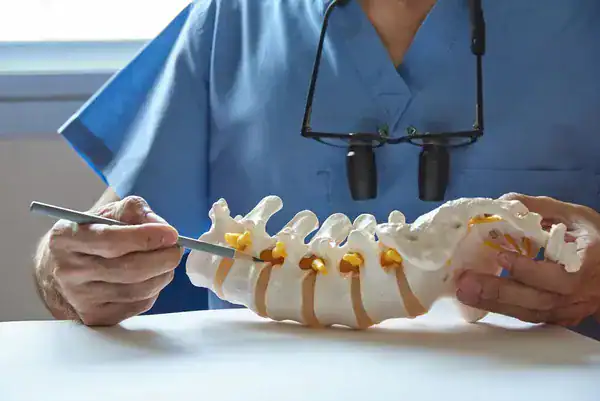Intrathecal Pain Pump
Delve deep into the world of an Intrathecal pain pump, the advanced pain management solution, as we discuss their utility, benefits, potential risks, and more.

Have you ever heard of an intrathecal pain pump? In a world where medical technology is rapidly evolving, these devices represent a breakthrough in chronic pain management. For patients who’ve tried conventional therapies to no avail, an intrathecal pain pump might be the answer they’ve been searching for.
What is an Intrathecal Pain Pump?
Often compared to a personal, on-call anesthesiologist, an intrathecal pain pump is small, programmable devices that delivers medication directly into the spinal fluid, targeting the pain at its source. With the precision and control these pumps offer, they can significantly reduce pain levels and improve the quality of life for many patients.
Understanding the Mechanism
The intrathecal pain pump works by sending medication through a small tube, or catheter, directly into the intrathecal space around the spinal cord. This method allows for lower dosages, thus reducing potential side effects commonly associated with oral or injected pain medications. In essence, it’s like delivering pain relief straight to the door of the pain-signaling nerves.
Components of the Pump
The pump comprises two main parts: the pump reservoir, which holds the medication, and the catheter that delivers the medication to the spinal cord. The device is implanted under the skin, and the catheter is carefully positioned in the intrathecal space.
The Benefits of Using Intrathecal Pain Pumps
Intrathecal pain pumps can bring a host of advantages, especially for patients who have not responded to other therapies.
Effective Pain Management
These pumps are incredible for chronic pain sufferers, offering effective pain management where other methods have failed. With the ability to directly target pain signaling nerves, they provide fast-acting, long-lasting relief.
Lower Medication Dosage
Because the medication is delivered directly to the pain source, much lower dosages are required compared to systemic pain relief methods. This means fewer side effects and a generally safer treatment protocol.
Who Can Benefit from an Intrathecal Pain Pump?
While these pumps can work wonders, they’re not for everyone. So, who exactly can benefit from an intrathecal pain pump?.
Chronic Pain Sufferers
Those with chronic pain conditions, such as chronic pancreatitis or complex regional pain syndrome, often find relief with intrathecal pain pumps when other treatments fall short. Also people who do not tolerate oral pain relieving medications my benefit significantly, as the pump usually bypasses all the common side effects of oral pain medications.
Cancer Patients
Patients with cancer-related pain, particularly those who have not found relief with standard pain medications, may significantly benefit from this method.
The Risks and Considerations of the Intrathecal Pain Pump
Like all medical procedures, the use of intrathecal pain pumps carries some risks and considerations.
Potential Side Effects
Although the risk is lower due to reduced medication doses, side effects can still occur, including constipation, nausea, and urinary retention.
Surgical Risks
As the pump is implanted surgically, there are risks associated with the procedure, such as infection or bleeding.
The Procedure: Implanting an Intrathecal Pain Pump
It’s time to peel back the curtain and reveal what happens during the implantation of intrathecal pain pumps.
Pre-surgery Preparation
Before the surgery, doctors conduct several tests to ensure the patient is a suitable candidate. This includes a trial period where medication is delivered via a temporary injection or sometimes with a catheter to assess its effectiveness. Performance Pain and Sports Medicine doctors usually utilize an injection into the spinal fluid to determine the effectiveness of the medication. The patient then fills out a pain diary to determine the amount of pain reduction and their improvement in function.
The Implantation Process
The pump implantation process is relatively straightforward and typically completed within 1-2 hours. The device is placed under the skin, and the catheter is threaded to the intrathecal space in the spine.
Life with an Intrathecal Pain Pump
Now let’s take a peek into life after the surgery.
Post-surgery Care
Post-surgery, patients typically are sent home the day of the implant from an outpatient surgery center. They are then discharged with detailed instructions about pump care and management.
Pump Refills
The pump reservoir needs periodic refilling, which is done through a simple outpatient procedure.
FAQs about Intrathecal Pain Pumps
Let’s address some of the common questions about intrathecal pain pumps.
Can I perform my regular activities with an intrathecal pain pump implanted?
Absolutely! Once you’ve recovered from the surgery, you should be able to return to most of your regular activities.
Are intrathecal pain pumps permanent?
No, they are not. The pump can be removed surgically if you no longer need it or if it isn’t helping manage your pain.
How often will my pump need to be refilled?
This largely depends on your specific dosage and pump settings, but typically, refills are required every 1-3 months.
Can the dosage of medication be adjusted?
Yes. Your healthcare provider can adjust the dosage as necessary via a wireless programmer without any additional surgery.
Is the procedure painful?
The implantation procedure is done under anesthesia, so you won’t feel any pain during the surgery. Post-surgery, any discomfort is typically manageable with medications.
Are there any restrictions after the pump is implanted?
Yes, there are a few. Doctors generally recommend avoiding activities that cause excessive twisting or bending for the first six weeks post-surgery. We also recommend a brace or binder to ensure that the pump heals into place properly.
Conclusion
Intrathecal pain pumps offer a beacon of hope for those struggling with chronic pain, providing effective pain management where conventional treatments have failed. However, as with all medical treatments, it’s crucial to have an in-depth discussion with your healthcare provider to weigh the benefits and risks. Performance Pain and Sports Medicine doctors are well versed in micro dosing of intrathecal pumps and are available for consultation to discuss your candidacy. Don’t hesitate to reach out to us, 346-217-1111 or submit an inquiry to in**@*************in.com.
